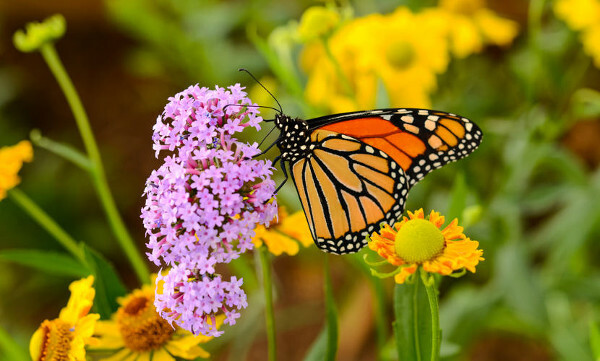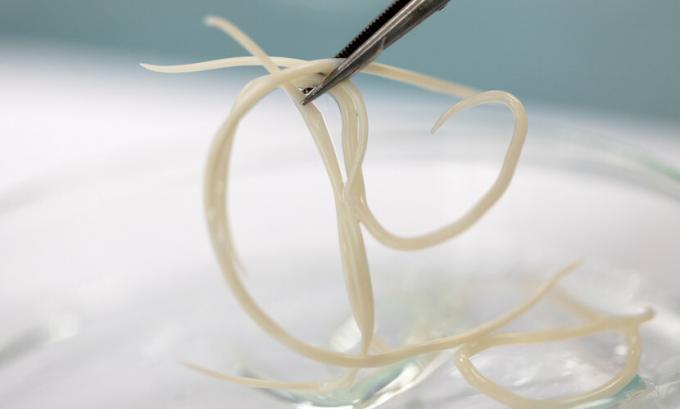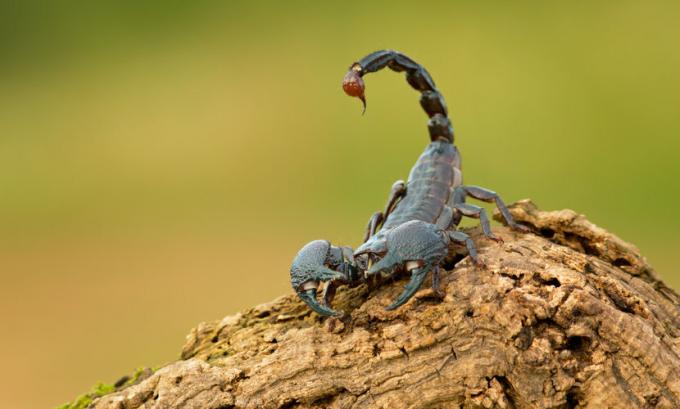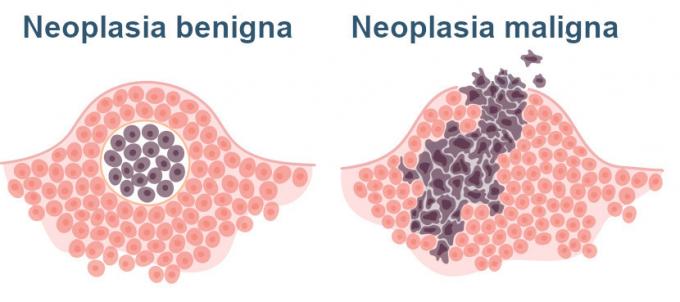invertebrate animals are those that do not have a skull and spine. Included in this group are a number of animals known to all of us, such as butterflies, mosquitoes, shrimp, sponges and jellyfishs. In this text we will address more about the invertebrate group, which is extremely broad, complex and diversified.
General characteristics of invertebrates
the invertebrates they are animals, therefore, share some characteristics in common with all representatives of this group of living beings. Among these characteristics, we can mention heterotrophic nutrition, eukaryotic cell type and multicellularity.
When we say that invertebrates areheterotrophic, we are saying that these animals are not capable of producing their own food, that is, they feed on other living beings. O eukaryotic cell typeit concerns a cell that has a defined nucleus. already the multicellularity it means that they are formed by more than one cell.

In addition to these characteristics shared with other animals, invertebrates, as stated, they do not have a skull and spine. We say that this classification is artificial, as it takes into account characteristics that are simple to verify and does not necessarily reflect any kinship relationship between these organisms. We can confirm this when we verify that some invertebrates are more related to vertebrates than to other beings of their own group.
Read too:animal kingdom records
Groups of invertebrate animals
Various groups of animals can be grouped into invertebrates. There are approximately 33 different phyla of this type of animal, however, normally only eight of these are referenced in textbooks, namely: poriferous, cnidarians, flatworms, nematodes, molluscs, annelids, arthropods and echinoderms.

See below a table with the main characteristics of invertebrates:
Characteristics of invertebrate groups | ||
Phylum |
Features |
Examples |
porifers |
They have a body rich in pores and feed through filtration, being, therefore, aquatic animals. They are sessile animals (which do not move) as adults and do not have real tissues forming their bodies. |
sponges |
Cnidarians |
They live in the aquatic environment and have two body shapes: polyps and jellyfish. Polyps are, for the most part, sessile, while jellyfish are free and swimming. The cnidarians have a gastrovascular cavity that has a single opening, which functions as an anus and mouth. |
Jellyfish, corals and hydras |
platyhelminths |
They have a flat body and are commonly called flat worms. They are known, mainly, for the representatives that cause disease to human beings, however, there are also free-living species. |
Tapeworms, planarians and schistosome |
Nematodes |
They are also known as worms, but they differ from flatworms because they have an elongated and tapered body at the ends. They also have free-living and parasitic species. |
roundworms and pinworms |
molluscs |
They have a soft body. In some representatives it is possible to verify the presence of a shell protecting the animal's body. The squid is a representative that has a reduced internal shell. |
Slugs, snails, squids, octopuses and seafood |
annelids |
They have a body divided into a series of rings. They can be found in the marine environment, in fresh water and in moist soil. |
earthworms and leeches |
arthropods |
Group with the largest number of known species. It is estimated that there are a billion billion (1018) of arthropods on the planet. Its main characteristic is the presence of an exoskeleton covering its body and the presence of articulated appendages. The exoskeleton limits the invertebrate growth, therefore, from time to time, it is necessary to carry out the molt, which is the exchange of this external skeleton. |
Butterflies, mosquitoes, spiders, lobsters and scorpions |
echinoderms |
They feature a network of internal channels through which water circulates. This system is essential to ensure movement and help feed these animals. |
Starfish, sea urchins and sea cucumbers |
Read too:venomous spiders
Invertebrate animal habitat

You invertebrate animals are found in the more varied habitat. Some species, such as the spider and the scorpion, live in the terrestrial environment. The octopus, in turn, is an animal found in the aquatic environment, more precisely in the marine environment. The hydra is also an aquatic animal, however, unlike the octopus, it is found in the freshwater environment.
There are still species that are parasites and they live inside our bodies, this being the case of the roundworm and the tapeworm. We realize, therefore, that invertebrates are not only a group that presents a great variety of morphological and physiological characteristics, but also a group of varied life habits.

Know more:Bicho-geographic - parasite with elongated body, cylindrical and tapered at the ends
Curiosities about invertebrate animals

Invertebrates account for about 95% of the animal species on our planet.
Some invertebrates can have large sizes, such as the fish tapeworm, which can reach up to 10 meters in length, and the giant squid, which can reach 18 meters.
Some compounds produced by sponges are being tested as anticancer agents.
The leeches were used for a long time to treat illnesses, through a technique called bloodletting.
The flea's jump is up to 200 times longer than the animal's body.
The toxicity of scorpion venom depends on the species, with some species causing death. In Brazil, the species that causes the most deaths is the Tityus serrulatus, the yellow scorpion. Children are, generally, the ones that present more critical conditions when bitten.
Starfish can feed on oysters by inserting their stomach into the shell and releasing enzymes that promote digestion.
Monarch butterflies make great migrations, going from Canada to Mexico to escape the winter. This route is over 4800 kilometers.
Turritopsis nutricula it is a species of jellyfish capable of rejuvenating itself. Studies have shown that this species is capable of continually regenerating and returning to its initial stage of life.
See too:Are there immortal beings? Learn more about jellyfish Turritopsis nutricula


